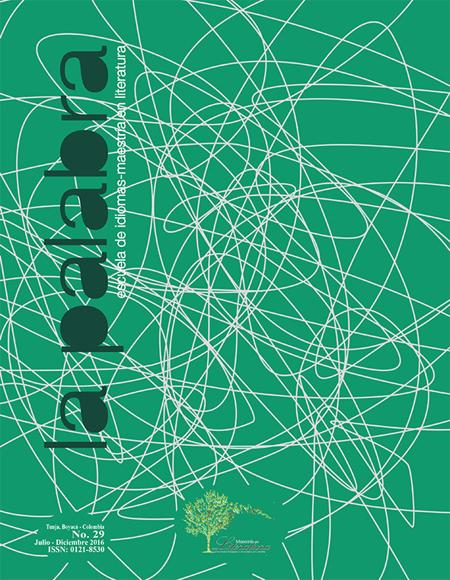De la palabra hipoteca como significante al goce con el tiempo en El perseguidor: una lectura desde el psicoanálisis

Resumen
La crítica literaria ha señalado que de lo que se trata con Johnny Carter, en El perseguidor, es de la crisis espiritual de un artista; sin embargo, a partir de postulados del Psicoanálisis, como disciplina que se encarga de estudiar lo inconsciente, se puede apreciar que el músico está atravesado por una problemática que implica lo inconsciente y de la que se pueden señalar aspectos específicos para comprender las palabras, actitudes, acciones y reacciones del personaje; se trata de ofrecer una lectura que ilustre ciertos rasgos de la problemática y ayude a esclarecer de lo que se trata con el ser del sujeto-artista. Para conseguir este objetivo, el presente texto lleva a cabo una presentación de la relación significante y cuerpo en la perspectiva psicoanalítica como fundamento de una lectura alternativa del relato literario El perseguidor de Julio Cortázar. El propósito es referir cómo un significante, una palabra, toca el cuerpo del sujeto, lo traspasa y lo pone a gozar. En el caso de El perseguidor, la palabra hipoteca pone a gozar al sujeto con el tiempo. Esto significa referir el tema del goce y de qué sujeto se trata en el caso del músico: un sujeto en una crisis permanente por la incidencia significante.
Palabras clave: inconsciente, goce, significante, tiempo, artista, Cortázar.
Palabras clave
inconsciente, goce, significante, tiempo, artista, Cortázar
Citas
- Ávila Rodríguez, A. (enero-junio de 2014). De la germinación de lo siniestro: La belleza en espejo roto. La palabra, (24), 99-101. doi: http://dx.doi.org/10.19053/01218530.2505 DOI: https://doi.org/10.19053/01218530.2505
- Cortázar, J. (1993). El perseguidor. Madrid: Alianza Editores S. A.
- Lacan, J. (2011). Seminario 20. Madrid: Paidós.
- Lacan, J. (1987). Seminario 11. Madrid: Paidós.
- Miller, J. (2001). La erótica del tiempo. Buenos Aires: Editorial Tres Haches.
- Monroy Zuluaga, L. (julio-diciembre de 2014). Entre el artista y el crítico: Basura de Héctor Abad Faciolince. La palabra, (25), 57-68. doi: http://dx.doi.org/10.19053/01218530.2870 DOI: https://doi.org/10.19053/01218530.2870
- Pinzón, H.J. (enero-junio de 2014). La literatura como in-corporación: el cuerpo como proceso. La palabra, (24), 91-97. doi:
- http://dx.doi.org/10.19053/01218530.2504 DOI: https://doi.org/10.19053/01218530.2504
- Velásquez, C. (2010). Un rasgo, fundamento de las identificaciones. En H. Gallo (2011). Clínica y teoría de las identificaciones. Bogotá: Nueva escuela lacaniana de Medellín.
- Velásquez, J. (2010). Las identificaciones y el inconsciente Real. En H. Gallo (2011). Clínica y teoría de las identificaciones. Bogotá: Nueva escuela lacaniana de Medellín.